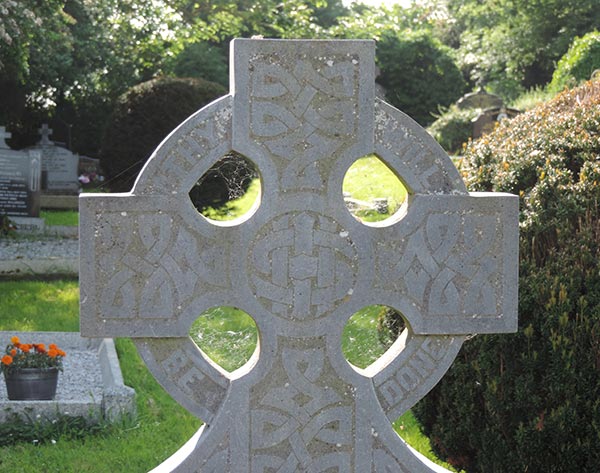
The island in the Atlantic at the western extreme of Europe seemed just one step too far for the mighty Roman Empire. When the Romans who reached Briton looked across the Irish Sea, they probably thought better of it - especially because it was rumoured that the folk over there were closely related to the troublesome Picts north of Hadrian’s wall. Nor did the Romans have to cross the Sea to Ireland – for at least one Irish King, Niall of the Nine Hostages, was only too willing to carry the war to them, as far as the Loire valley in France.
Yet, some Roman citizens of note did make it to Ireland. Patricius (Patrick) was brought unwillingly at first as a slave; but later returned willingly in response to God’s calling. He was not the first Christian to reach this island – others had arrived up to a century earlier, following the trade routes from Europe. By 431AD, Christianity was sufficiently established on the island for Pope Celestine to send Palladius as bishop 'to the Scoti (i.e. Irish) believing in Christ'.
Lying largely beyond the influence of the Roman Empire, Irish Celtic Christianity developed very differently from elsewhere in Europe. For example, whereas Christianity had spread across the Roman Empire, gravitating towards urban centres of commerce and culture, Celtic Christianity would seek out the remote places - hilltops, forest glades and rocky crags. Some, such as the Culdees, sought complete isolation - others gathered in small remote communities, such as the four sites which marked the beginnings of Christianity in this parish.
Another difference was that early Irish Christianity was more monastic than diocesan. Local kings and chieftains, who accepted the faith, granted land for churches and monasteries, and would sometimes also appoint the abbot. Abbots soon became the most influential church leaders: indeed the Abbots of Bangor and Moville played an important role in our story.
Although there were bishops in the Irish church from the beginning, the structures that we are familiar with (including dioceses and parishes, bishops and priests) would not take hold firmly until the C12th.
We cannot say exactly when the four ancient churches of this parish were established, but from very early beginnings churches were established at Aghalee, Aghagallon, Maghernagaw (Tamlaght) and Magheramesk(Rathmesk).
However, before we visit each of these sites, we will first visit the Abbeys of Bangor and Moville.
